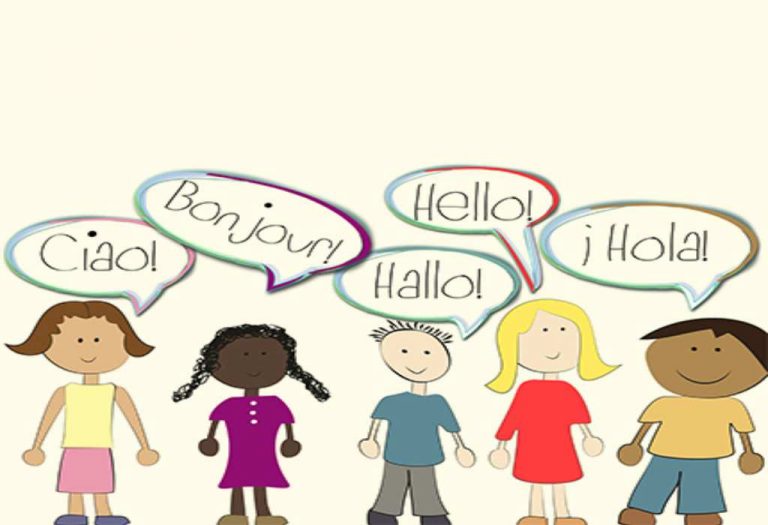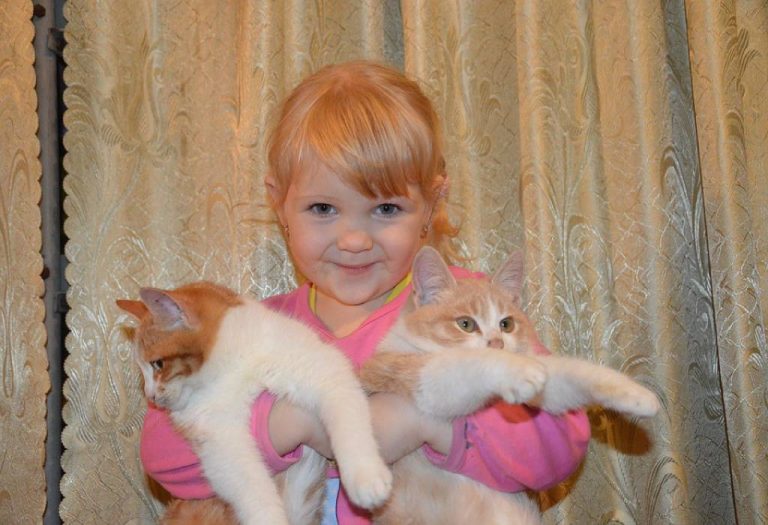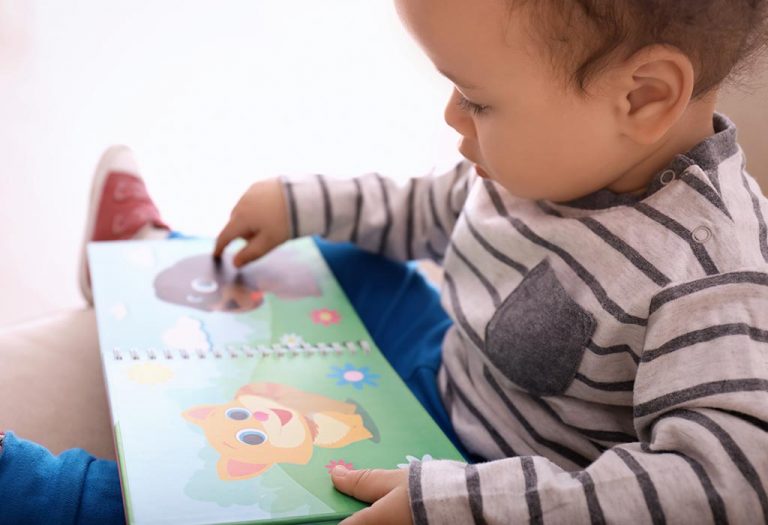Why Toddlers Imitate Peers and Older Kids?
- Understanding Peer Imitation in Toddlers
- Activities to Encourage Imitation Skills in Toddlers
- Phases for Developing Verbal Imitation Skills in Toddlers
- Activities to Build Verbal Imitation in Toddlers
- FAQs
It’s crucial to understand the role of copying one’s peers and imitation in child development. This is a significant part of growing up and must be encouraged as long as it’s enhancing and adding to the pro-social development of a child.
Research has shown that a newborn baby starts to mimic his mother. This becomes more evident when the child mimics someone older who’s smiling or protruding his tongue at him. Imitation opens up a whole new area of development and interaction. Fine motor skills can be learned by way of imitation like stacking blocks and using a crayon. Pretend play, meanwhile, remains one of the best and most preferred forms of play for toddlers and children to learn new skills.
Understanding Peer Imitation in Toddlers
1. Role of Imitation
Being imitated and imitating others have a clear influence on infants’ prosocial behaviour and young children’s trust in others. Social experiments conducted by researchers have also shown that imitation in children is a powerful means of social influence in development.
2. Process of Imitation
Imitation behavior in toddlers consists of both cognitive and social components. It’s a complex process in which the child needs to see the adult act, absorb it, translate it into an action, and then execute it through his motor skills. Adult or peer imitation provides a firm foundation for advanced forms of interpersonal relationships and social cognition.
3. Impact of Imitation
Right from infancy, mimicry is seen to have positive social consequences. It can enhance and promote a general prosocial orientation towards others. Just like adults, toddlers too tend to follow and trust those who mimic them and are influenced by the preferences and opinions of those set of people.
A child imitating older kids and adults is also learning new skills from them. Pretend play again plays an important role where the child can learn a lot of skills and activities by copying his peers and adults. But, the flip side is that he may also catch unsavoury actions shown on television and mimic the same. You can guard against this by keeping a strict watch on what your toddler is allowed to see on TV.
4. Stages of Imitation
For toddlers copying peers, there’s a definitive and progressive path according to their age:
- Imitating facial gestures amongst newborns like smiling, pouting, opening the mouth and showing the tongue.
- Imitating actions on objects amongst infants till the age of 9-12 months like holding something and touching the nose.
- Imitation of other people’s intentions for toddlers in the age group of 15-18 months.
- Imitative role play and empathetic behaviour in toddlers above 2 years of age.
Activities to Encourage Imitation Skills in Toddlers
Imitation skills are crucial for toddlers as they help in developing language, social, and cognitive abilities. Here are some effective activities to encourage imitation skills in young children:
1. Singing Songs with Actions
Engage toddlers by singing simple songs that include actions, like “The Wheels on the Bus” or “If You’re Happy and You Know It.” The combination of music and movement helps children follow and imitate both the words and gestures.
2. Mirror Play
Sit with your toddler in front of a mirror and make different facial expressions or movements. Encourage your child to mimic your actions. This activity not only promotes imitation but also enhances self-awareness.
3. Simon Says
Play a simplified version of “Simon Says” where you perform various actions such as clapping hands, stomping feet, or touching your nose. Ask the toddler to imitate each action, making sure to keep the commands simple and clear.
4. Pretend Play
Use toys and props to engage in pretend play scenarios, such as cooking in a play kitchen or taking care of a baby doll. Demonstrate actions like stirring a pot or feeding the doll, and encourage your toddler to imitate these actions.
5. Story Time with Puppets
Use hand puppets to tell a story, incorporating exaggerated movements and voices. Invite your toddler to use their own puppet to imitate the actions and voices, promoting both verbal and non-verbal imitation skills.
Phases for Developing Verbal Imitation Skills in Toddlers
Developing verbal imitation skills in toddlers is a gradual process that involves several distinct phases. Here are the eight phases that guide this developmental journey:
Phase 1: Imitation of Actions with Objects
The initial phase involves toddlers imitating actions using objects. For instance, your child might mimic you by banging two blocks together. This foundational skill is often missing in “late talkers.” Interestingly, a child’s ability to imitate actions (not words) at 18 months is a significant predictor of their language abilities at 36 months (3 years).
Phase 2: Imitation of Communicative Gestures
The next phase assesses how well your child imitates large body movements (such as jumping, marching, dancing) and gestures like waving hi/bye, pointing, blowing kisses, clapping, and shaking/nodding their head for “yes/no.” To help your child start imitating gestures, incorporate “finger play” during songs (like finger movements for “Itsy Bitsy Spider” or hand movements for “If You’re Happy and You Know It”). This approach is both fun and effective.
Phase 3: Mimicking Non-verbal Actions with Mouth/Face
Although research does not definitively prove that imitating non-verbal actions with the face/mouth is essential before a child learns to speak, some children benefit from this practice. Examples of these actions include puffing up cheeks, sticking out the tongue, puckering for a kiss, and making a “raspberry” sound.
Phase 4: Imitation of Vocal Movements
Can your child mimic a “fake cough”? How about panting like a dog or growling? These vocalizations, while not transcribable, are crucial steps toward helping a child eventually imitate words.
Phase 5: Imitation of Exclamatory Words
This phase involves the child imitating exclamatory words that can be spelled out, such as “quack,” “woof,” “vroom,” “uh-oh,” “wow,” and “wee.” These are considered “real words” because they use consistent consonant and vowel patterns. Exclamatory words are an essential first step in verbal imitation.
Phase 6: Imitation of Words in Context
Using verbal routines, or words that become predictable through repeated use in the same activity, can be very helpful. For example, while singing “Clean up, clean up, everybody every…,” your child might complete the phrase with “…where!” Incorporating verbal routines into daily life is excellent for promoting language skills.
Phase 7: Imitation of Single Words
After mastering the previous phases, your child can begin to imitate functional words. It’s beneficial to include words like “open,” “more,” “up,” “down,” and “help” through repetition.
Phase 8: Imitation of Short Phrases
For effective communication, it’s important for your child to be able to imitate short phrases. By this stage, your child might start imitating phrases like “bye mama!” and “more please,” demonstrating their growing verbal skills.
Activities to Build Verbal Imitation in Toddlers
Building verbal imitation skills in toddlers is essential for their language development and communication abilities. Here are some engaging activities to help toddlers develop these skills:
1. Singing Nursery Rhymes
Singing nursery rhymes like “Twinkle, Twinkle, Little Star” or “Old MacDonald Had a Farm” helps toddlers mimic sounds and words. The repetitive nature of nursery rhymes makes it easier for toddlers to remember and imitate the words.
2. Reading Aloud
Read simple, repetitive books to your toddler and encourage them to repeat key phrases. Books with predictable patterns, such as “Brown Bear, Brown Bear, What Do You See?” are particularly effective for promoting verbal imitation.
3. Call and Response Games
Engage in call and response games where you say a word or a phrase, and your toddler repeats it. Start with simple sounds or words and gradually increase the complexity as they become more comfortable with imitation.
4. Daily Routines
Incorporate verbal imitation into daily routines by naming objects and actions as you go about your day. For example, during mealtime, you can say “eat apple” or “drink milk” and encourage your toddler to repeat these phrases.
FAQs
1. Why do toddlers sometimes prefer to imitate older kids rather than adults?
Toddlers often view older kids as more relatable models than adults. Older children are closer to their developmental stage, making their actions and behaviors seem more achievable and relevant. Additionally, older kids often engage in activities that are more appealing and understandable to toddlers, which encourages imitation.
2. Can imitation of peers lead to the development of negative behaviors in toddlers?
Yes, toddlers can imitate both positive and negative behaviors observed in peers. If toddlers frequently see peers engaging in undesirable behaviors, they may mimic them. Caregivers must provide guidance and reinforce positive behaviors while addressing and redirecting negative ones.
Humans have the privilege of not only learning new motor skills but also learning about other people through imitation. A feeling of fundamental connectedness between the self and others is one reason toddlers imitate others. Similar actions and behaviour may make them feel that others feel the same way as they do and they may use their own case as a framework for understanding others. The attention they receive when imitating is another reason toddlers mimic peers and older kids.
References/Resources:
1. Speech and Language Milestones; American Academy of Pediatric Dentistry; https://www.aapd.org/globalassets/media/policies_guidelines/r_speechmilestones.pdf
2. Brain Architecture; Center on the Developing Child, Harvard University; https://developingchild.harvard.edu/science/key-concepts/brain-architecture/
3. Milestones Matter: Your Child’s Growth & Development By Age 5; American Academy of Pediatrics; https://www.healthychildren.org/English/family-life/health-management/Pages/Milestones-Matter.aspx
4. Communication and Your 1- to 3-Month-Old; Nemours Kids Health; https://kidshealth.org/en/parents/c13m.html
5. Communication and Your 4- to 7-Month-Old; Nemours Kids Health; https://kidshealth.org/en/parents/c47m.html
6. Communication and Your 8- to 12-Month-Old; Nemours Kids Health; https://kidshealth.org/en/parents/c812m.html
7. The three T’s of communication: Talking more with your child; Michigan State University; https://www.canr.msu.edu/news/the_three_ts_of_communication_talking_more
Also Read:
Tips to Deal With a Defiant Child
How to Deal with a Stubborn Child?
Effective Ways for Disciplining a Toddler
Why Do Kids Tattle and How to Deal With It?
How to Deal with Demanding Behaviour in Toddlers?
Was This Article Helpful?
Parenting is a huge responsibility, for you as a caregiver, but also for us as a parenting content platform. We understand that and take our responsibility of creating credible content seriously. FirstCry Parenting articles are written and published only after extensive research using factually sound references to deliver quality content that is accurate, validated by experts, and completely reliable. To understand how we go about creating content that is credible, read our editorial policy here.























